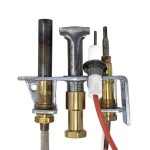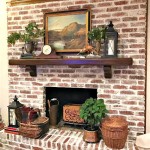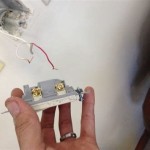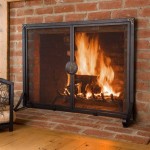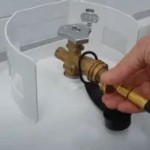How To Clean Your Fireplace Bricks
Fireplaces, while providing warmth and ambiance, inevitably accumulate soot and grime on their brick surfaces. This buildup not only detracts from the aesthetic appeal of the fireplace but can also potentially pose a fire hazard if left unaddressed for extended periods. Maintaining clean fireplace bricks is therefore crucial for both the visual enjoyment and safe operation of the fireplace. The following detailed guide outlines several effective methods for cleaning fireplace bricks, catering to varying degrees of soiling and personal preferences.
Preparation and Safety Measures
Prior to initiating any cleaning process, thorough preparation is essential. This involves several key steps designed to protect the surrounding environment and the individual performing the cleaning. Firstly, ensure the fireplace is completely cold. Attempting to clean hot or even warm bricks can result in burns and ineffective cleaning. Allow ample time for the fireplace to cool down completely, ideally overnight, after its last use.
Next, protect the surrounding area from potential staining or damage. Lay down drop cloths or old sheets around the fireplace to catch any drips or splashes of cleaning solutions. This is particularly important for flooring and nearby furniture. Securing these protective layers will minimize cleanup efforts later.
Personal protective equipment is indispensable. Wear rubber gloves to protect the skin from harsh chemicals and abrasive cleaners. Eye protection, such as safety glasses or goggles, is also crucial to prevent splashes from entering the eyes. Consider wearing a dust mask, especially if working with dry abrasive cleaners or dealing with significant soot accumulation, to avoid inhaling particles.
Finally, gather the necessary cleaning supplies and tools. Having everything readily available will streamline the cleaning process and improve efficiency. This includes the chosen cleaning solution, scrub brushes (both stiff-bristled and softer), buckets, sponges, and potentially a putty knife or similar tool for scraping off stubborn deposits.
Dry Cleaning Methods for Light Soiling
For fireplaces with relatively light soot accumulation or for individuals who prefer to avoid using water and cleaning solutions, dry cleaning methods offer an effective and less intrusive approach. These methods rely on physical abrasion to remove surface soot and grime.
One common dry cleaning method involves using a stiff-bristled brush. A wire brush or a brush with durable synthetic bristles can be used to scrub the brick surfaces. Apply firm, even pressure to dislodge the soot. Work in small sections, brushing in overlapping strokes to ensure uniform cleaning. Regularly tap the brush against a hard surface or use a vacuum cleaner attachment to remove accumulated soot from the bristles.
Another effective dry cleaning tool is a dry sponge. These specialized sponges are designed to absorb soot and grime without the need for water. They are particularly useful for delicate brick surfaces or for removing light soot stains. Wipe the sponge across the brick surface in a single direction, then rotate or fold the sponge to expose a clean surface as it becomes saturated with soot. Replace the sponge when it becomes excessively soiled.
A vacuum cleaner with a brush attachment can also be used to remove loose soot and debris. This is especially helpful for cleaning crevices and hard-to-reach areas. Use the brush attachment to loosen soot and then vacuum it up. Be sure to empty the vacuum cleaner bag or canister frequently to prevent it from becoming full and reducing suction power.
After using any of these dry cleaning methods, wipe down the bricks with a clean, dry cloth to remove any remaining residue. This will help to prevent the soot from resettling and ensure a cleaner finish.
Wet Cleaning Methods for Moderate to Heavy Soiling
When dealing with more significant soot buildup or stubborn stains, wet cleaning methods offer a more powerful approach. These methods utilize water and cleaning solutions to dissolve and remove embedded grime.
A simple and effective solution involves using dish soap and warm water. Mix a few drops of mild dish soap into a bucket of warm water. Using a sponge or scrub brush, apply the soapy water to the brick surfaces. Scrub gently to loosen the soot and grime. Rinse the bricks thoroughly with clean water to remove any soap residue. Use a clean, dry cloth to wipe down the bricks and allow them to air dry completely.
For more stubborn stains, a solution of trisodium phosphate (TSP) can be used. TSP is a powerful cleaning agent that is effective at removing grease, grime, and soot. However, it is important to handle TSP with caution, as it can be irritating to the skin and eyes. Wear gloves and eye protection when using TSP. Mix TSP with water according to the manufacturer's instructions. Apply the solution to the brick surfaces using a sponge or scrub brush. Allow the solution to sit for a few minutes to dissolve the soot. Scrub the bricks thoroughly and then rinse them with clean water. Wipe down the bricks with a clean, dry cloth and allow them to air dry completely.
Another effective cleaning solution is a mixture of vinegar and water. Vinegar is a natural cleaning agent that can help to dissolve soot and grime. Mix equal parts vinegar and water in a spray bottle. Spray the solution onto the brick surfaces and allow it to sit for a few minutes. Scrub the bricks with a sponge or scrub brush and then rinse them with clean water. Wipe down the bricks with a clean, dry cloth and allow them to air dry completely.
For extremely stubborn stains, a commercial brick cleaner may be necessary. These cleaners are specifically formulated to remove soot and grime from brick surfaces. Follow the manufacturer's instructions carefully when using a commercial brick cleaner. Always test the cleaner in an inconspicuous area first to ensure that it does not damage the brick. Apply the cleaner to the brick surfaces using a sponge or scrub brush. Allow the cleaner to sit for the recommended amount of time and then scrub the bricks thoroughly. Rinse the bricks with clean water and wipe them down with a clean, dry cloth. Allow the bricks to air dry completely.
When using any wet cleaning method, it is important to avoid saturating the bricks with water. Excessive moisture can damage the bricks and lead to mold growth. Use a sponge or scrub brush to apply the cleaning solution sparingly and avoid allowing water to pool on the brick surfaces. Dry the bricks thoroughly after cleaning to prevent moisture damage.
Addressing Stubborn Residue and Maintaining Fireplace Bricks
Despite employing various cleaning methods, some stubborn residue may persist on the fireplace bricks. These stubborn deposits often require specific treatments to achieve complete removal. Furthermore, establishing a maintenance routine ensures the fireplace bricks remain clean and aesthetically pleasing over time.
For particularly stubborn soot deposits, a putty knife or similar tool can be used to carefully scrape off the residue. Exercise caution to avoid damaging the brick surface. Apply gentle pressure and work slowly, focusing on loosening the deposit rather than forcibly removing it. After scraping, clean the area with a wet cleaning method to remove any remaining residue.
Another technique for addressing stubborn residue involves creating a paste of baking soda and water. Apply the paste to the affected area and allow it to sit for several hours or overnight. The baking soda will help to absorb the soot and loosen the residue. Scrub the area gently with a sponge or scrub brush and then rinse with clean water. This method is particularly effective for removing discoloration caused by soot.
Once the fireplace bricks are clean, consider applying a sealant to protect them from future staining and soot buildup. A brick sealant will create a barrier that prevents soot from penetrating the brick surface, making it easier to clean in the future. Follow the manufacturer's instructions carefully when applying a sealant. Ensure the bricks are completely dry before applying the sealant and allow it to cure properly before using the fireplace.
To maintain clean fireplace bricks, establish a regular cleaning routine. Wipe down the bricks with a dry sponge or cloth after each use of the fireplace to remove any loose soot. Periodically clean the bricks with a wet cleaning method to prevent soot from building up. This routine will help to keep the fireplace looking its best and prevent the need for more intensive cleaning in the future.
Regular inspection of the fireplace is also crucial. Periodically check the bricks for cracks or damage. Repair any damage promptly to prevent further deterioration. Also, ensure the chimney is properly maintained and cleaned regularly to prevent soot buildup and ensure proper ventilation.

How To Clean A Fireplace Diy Basics

How To Clean Brick The Home Depot

How To Clean Fireplace Bricks 9 Steps With S Wikihow

How To Clean A Brick Fireplace The Family Handyman

How To Clean Brick Fireplaces Mantels Hearths And More My Space

How To Clean Brick The Home Depot

How To Clean Fireplace Bricks 9 Steps With S Wikihow

How To Clean Fireplace Bricks Cleanup Team

How To Clean A Fireplace Diy Basics

Vane Cottage Chemical Brick Mortar Soot Cleaner 6
Related Posts

